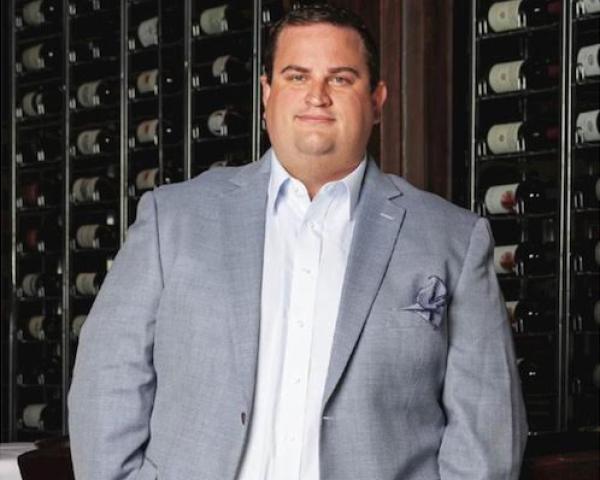KEY TAKEAWAYS:
--With so many variables in the equation, brokers and agents must devise strategies that won’t upend the objectives of affluent clients.
--Policyholders must be encouraged to obtain quotes before making a major purchase. This tends to reduce or eliminate insurance sticker shock after a significant expense, such as the purchase of an additional home or luxury automobile.
---------
The personal property & casualty insurance landscape functions much differently now than it did a decade ago. Unprecedented national and global events have changed the way high-net-worth individuals secure protection for their assets. These circumstances have also significantly increased the ancillary costs of home, car and other high-end purchases that require insurance coverage.
In one instance, an existing policyholder bought an additional home in Florida. Their insurance portfolio included two other homeowner policies with extensive jewelry riders, a five-car auto policy and an umbrella policy. After the closing, the client contacted his broker to add coverage on the new home, assuming that, at most, the insurance would add another $15,000 to their premium costs annually. However, the premium for the additional home amounted to $60,000 — a figure that would have been a deal breaker for many buyers.
The policyholder may not have considered that purchasing home insurance in hurricane-ravaged Florida has become an exercise in caution. But it has. Insurance costs have escalated in Florida and elsewhere due to the pandemic, catastrophic weather events like Hurricane Ian and the inflationary environment over the last few years.
In 2023 alone, HUB International has witnessed mid-year average increases across the board. Here’s an approximate range:
- Auto insurance: Up 15% to 20%
- Homeowners insurance: Up 20% to 30%
- Umbrella policies: Up 5% to10%
With so many variables in the equation, brokers and agents must devise strategies that won’t upend the objectives of affluent clients. The plan should include a need assessment, coverage limit discussions and an understanding of policy exclusions that could prove costly.
See also: 'It’s the Customer Experience, Stupid'
Four strategies for protecting high-end assets in a whirlwind insurance market
Coastal areas are not the only regions witnessing tumultuous insurance rates and availability. Claims resulting from wildfires, hailstorms, extreme heat and water damage all have contributed to the mix as well as an increase in replacement cost value of a home with “smart” equipment and contents. Here are four best practices insurance representatives can adopt to protect policyholders and solidify business relationships.
1. Communicate early and often. Policyholders must be encouraged to obtain quotes before making a major purchase. This tends to reduce or eliminate insurance sticker shock after a significant expense, such as the purchase of an additional home or luxury automobile. By understanding all possible details about a vacation home or sports car, brokers can work with clients to formulate estimates on what sufficient insurance coverage will cost.
Homeowners need to reframe the way they look at insurance costs. Whereas premiums had been a small percentage of a purchase, securing adequate coverage can now unexpectedly blow up a budget in strained insurance markets.
2. Present all the facts of the case. Putting together a comprehensive personal lines insurance portfolio is a two-way street. Insurance agents must obtain all the details from clients about a high-end home, for example, so the carrier can properly underwrite each case.
In an increasingly digital marketplace, insurers are using more innovative means to arrive at optimal issuance and coverage decisions to help protect their clients’ bottom lines. Data drives insurance risk assessment decisions at executive management levels. On a lesser scale, agents can use data modeling to help forecast risk for clients. This might include calculating the probability of incurring a total loss of a home due to a wildfire or hurricane.
3. Promote a preventive mindset. Offer guidance on how preventive measures help homeowners maintain a solid insurance program over time. Claims prevention likewise helps improve carrier loss ratios. To reduce the odds of a claim, agents should advise homeowners to recognize common hazards.
- Water. In 2020, 20% of all homeowner claims involved water. Policyholders must know that properly maintained indoor fire sprinklers and automatic water shutoffs are two preventive measures that underwriters consider when assessing a risk.
- Fire. Testing fire systems periodically helps ensure safety and loss control. Heat sensors triggered at certain temperatures can be wired to notify fire departments, improving response time and mitigating damage.
- Power failure. Insurance advisers can communicate how generators and backup power systems should be tested regularly to prevent water and sewer backup due to inoperable sump pumps during a power loss.
- Combustible matter. Gas leaks produce fumes that can be costly and deadly if ignited. Offering tips to policyholders on installing and properly maintaining gas leak sensors can help avoid potential catastrophes in earthquake-prone areas.
- Regional risks. Be it floodwaters, hurricanes or wildfires, affluent policyholders should understand the risks specific to a home’s location. They can take preventive measures, such as structural reinforcements or fire-resistant construction materials.
- Storms. With a new sale or at renewal, agents should make clients aware that roof damage and replacement can be another costly endeavor. As a rule of thumb, the newer a roof is, the more acceptable a homeowner’s risk is. Hailstorms are a common culprit, and heat maps can help identify risks in storm-prone regions.
4. Encourage safe driving practices. The post-COVID inflationary trend has boosted vehicle prices skyward and increased the amount of risk carriers must bear. Collision and property damage claims have increased in both average amount and frequency. Distracted driving and driving under the influence have added to the risk of severe injury or death.
Continue to emphasize that foregoing the use of phones while driving can reduce the odds of a serious car crash. For teen drivers, let parents know about apps like Life360 to ensure that youthful operators cannot text or talk while driving.
It’s a different world
Understanding insurance market dynamics and navigating the changes are the first steps to a prudent loss control plan. To prevent and mitigate claims, brokers and policyholders must communicate freely and gather all relevant data on homes and automobiles, while encouraging their clients to adopt a preventive frame of mind. With the unique challenge of protecting highly successful individuals and their assets, holistic risk management conversations can help pull the entire plan together.






